Overview of the SASNOS
The St. Andrews-Swansea Neurobehavioural Outcome Scale (SASNOS) looks at some of the difficulties that people with acquired brain injury may experience. If you would like to request a copy of the SASNOS (proxy and/or self-rated versions) please click here. Scoring and guidance Material is available on this website.
Description
Behaviours and symptoms of NBD are rated on 49 items which measure five major domains of NBD (interpersonal behaviour, cognition, aggression, inhibition and communication; each has 2-3 subdomains.
Each item consists of a statement regarding a behaviour or other symptom of NBD whose perceived prevalence is rated using a seven point scale (‘never’ to ‘always’).
An Excel spreadsheet is used to calculate a range of standardised scores based on ratings of a neurologically healthy sample. Scoring is constructive, so higher ratings equate to a perception of ability.
The profile of NBD can be used to determine needs, track recovery and response to rehabilitation, and for research purposes.
Development
An initial pool of 117 items was generated based on the WHO-ICF, further refined by reference to a content analysis of semi-structured interviews with relatives of seriously injured ABI patients. Items were selected on the basis that they reflected behaviours that could be observed objectively.
Clinicians working in a neurobehavioural service then rated ABI patients using the initial item pool. Principal Components Analysis was used to reduce the number of items to 49 and identify the underlying factor (domain) structure; Rasch analysis and item discrimination statistics were used to ensure appropriate calibration of the scale.
Further statistical analysis of both ABI and neurologically healthy control data allowed a range of validity and reliability indicators to be determined.
Norm-referenced interpretation of ratings was also undertaken by converting ratings to T-scores to enable comparison for diagnostic purposes with a neurologically healthy control group and for clinicians to construct a meaningful profile of strengths and weaknesses.
Benefits
To find out more about the SASNOS and its benefits, please click here.


